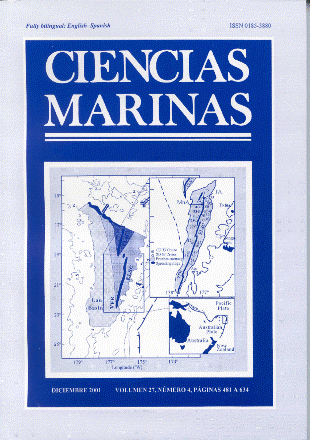Hydrothermal input in recent sediments proximal to the Eastern Lau Spreading Centre, Lau Basin, SW Pacific
Main Article Content
Abstract
The partition geochemistry and recent Mn accumulation rates have been studied in 14 sediment cores collected adjacent to the Eastern Lau Spreading Centre (ELSC) in the Lau Basin, SW Pacific. The sediments are oxic in nature, formed of ash with abundant nannofossil ooze and hydrothermal Mn oxides dispersed within the calcareous sediments. These oxides represent distal plume fallout derived mainly from the hydrothermal fields along the ELSC and possibly from the nearby Central Lau Spreading Centre (CLSC). Nickel, Mo, Pb and, to a lesser extent, Co and V are associated with the Mn-oxide phase, possibly scavenged by Mn precipitates. Only low proportions of Fe, Zn and Cu are found in the oxide phase, these elements being mainly associated with the detrital/altered-detrital sediment phases. Some peaks in the Mn distribution downcore appear to correlate among the cores studied, indicating common pulses of hydrothermal plume fallout. The similar Fe/Mn oxide ratios (1.4–1.9) in surficial sediments proximal to the Eastern and Central Lau Spreading Centres, suggest similar plume fallout compositions in these two areas. Mean Mn accumulation rates average 26 mg cm–2 ka–1. The hydrothermal sedimentation near the ELSC is probably related to a fully developed hydrothermal plumbing at the spreading centre and thus the ELSC has a good potential for hosting massive sulphide deposits, although a lower hydrothermal input at its northernmost tip may indicate a drop in magmatic activity and mineral potential in the oldest section of this spreading ridge.
Downloads
Article Details
This is an open access article distributed under a Creative Commons Attribution 4.0 License, which allows you to share and adapt the work, as long as you give appropriate credit to the original author(s) and the source, provide a link to the Creative Commons license, and indicate if changes were made. Figures, tables and other elements in the article are included in the article’s CC BY 4.0 license, unless otherwise indicated. The journal title is protected by copyrights and not subject to this license. Full license deed can be viewed here.

